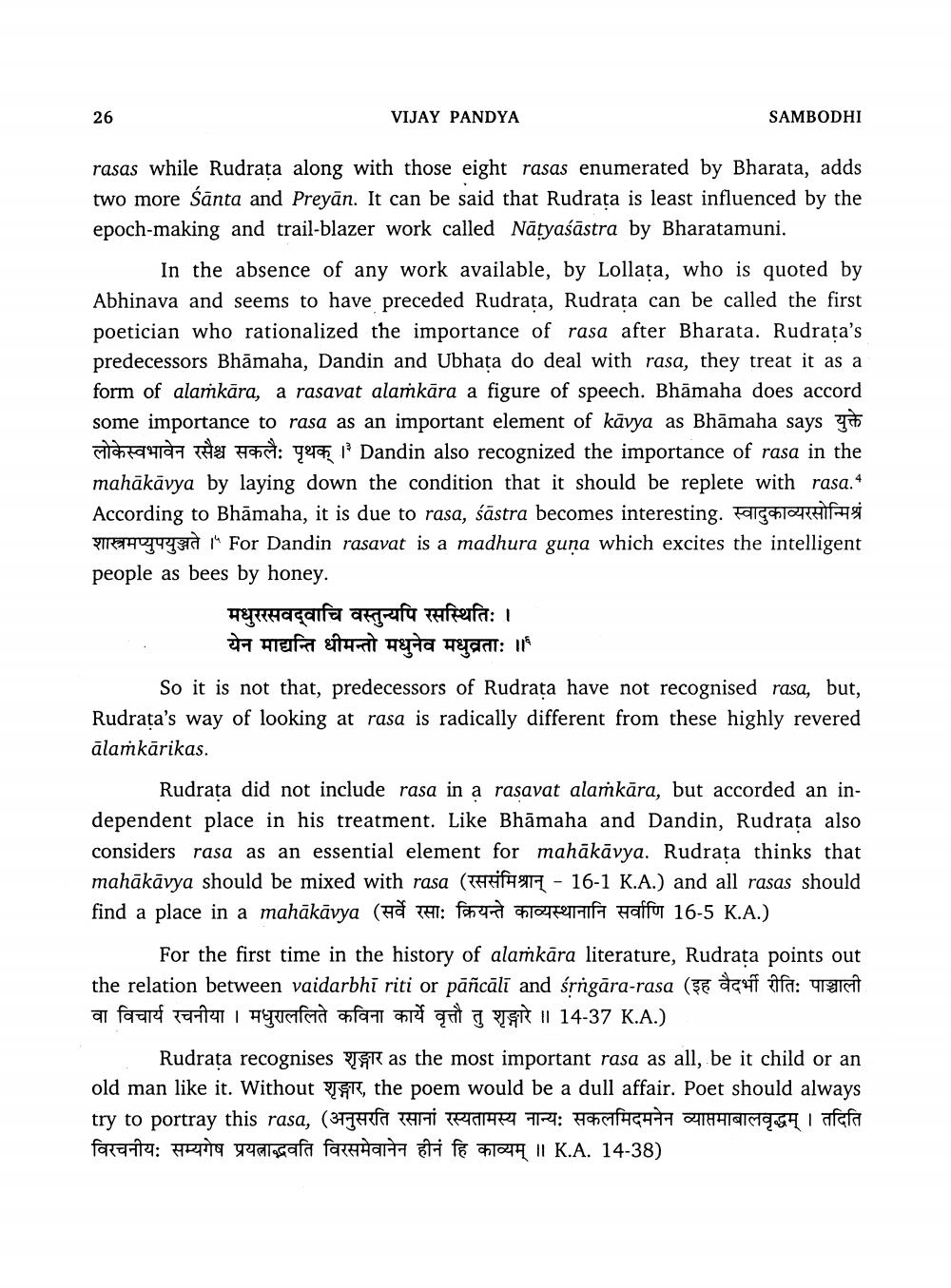________________
26
VIJAY PANDYA
SAMBODHI
rasas while Rudrata along with those eight rasas enumerated by Bharata, adds two more śānta and Preyān. It can be said that Rudrata is least influenced by the epoch-making and trail-blazer work called Nātyaśāstra by Bharatamuni.
In the absence of any work available, by Lollata, who is quoted by Abhinava and seems to have preceded Rudrata, Rudrata can be called the first poetician who rationalized the importance of rasa after Bharata. Rudrata's predecessors Bhāmaha, Dandin and Ubhata do deal with rasa, they treat it as a form of alaskāra, a rasavat alaskāra a figure of speech. Bhāmaha does accord some importance to rasa as an important element of kāvya as Bhāmaha says to Milan tanda The Hohet: geraka i Dandin also recognized the importance of rasa in the mahākāvya by laying down the condition that it should be replete with rasa. According to Bhāmaha, it is due to rasa, śāstra becomes interesting. Faigh1QRHITESİ
q " For Dandin rasavat is a madhura guna which excites the intelligent people as bees by honey.
मधुररसवद्वाचि वस्तुन्यपि रसस्थितिः ।
येन माद्यन्ति धीमन्तो मधुनेव मधुव्रताः ॥ So it is not that, predecessors of Rudrata have not recognised rasa, but, Rudrata's way of looking at rasa is radically different from these highly revered alaṁkārikas.
Rudrata did not include rasa in a rasavat alaṁkāra, but accorded an independent place in his treatment. Like Bhāmaha and Dandin, Rudrata also considers rasa as an essential element for mahākāvya. Rudrata thinks that mahākāvya should be mixed with rasa (THUAT - 16-1 K.A.) and all rasas should find a place in a mahākāvya ( TH: fonen hopeni Haffut 16-5 K.A.)
For the first time in the history of alaskāra literature, Rudrata points out the relation between vaidarbhi riti or pāñcāli and śrngāra-rasa (56 dat afa: la a faart varten i Herca afant are quit I YST II 14-37 K.A.)
Rudrata recognises SR as the most important rasa as all, be it child or an old man like it. Without YSR, the poem would be a dull affair. Poet should always try to portray this rasa, (374Rfa TIKI TRIATRI: HGH HANG I affa faceri: RPT yalagafa fa ha ife | K.A. 14-38)




